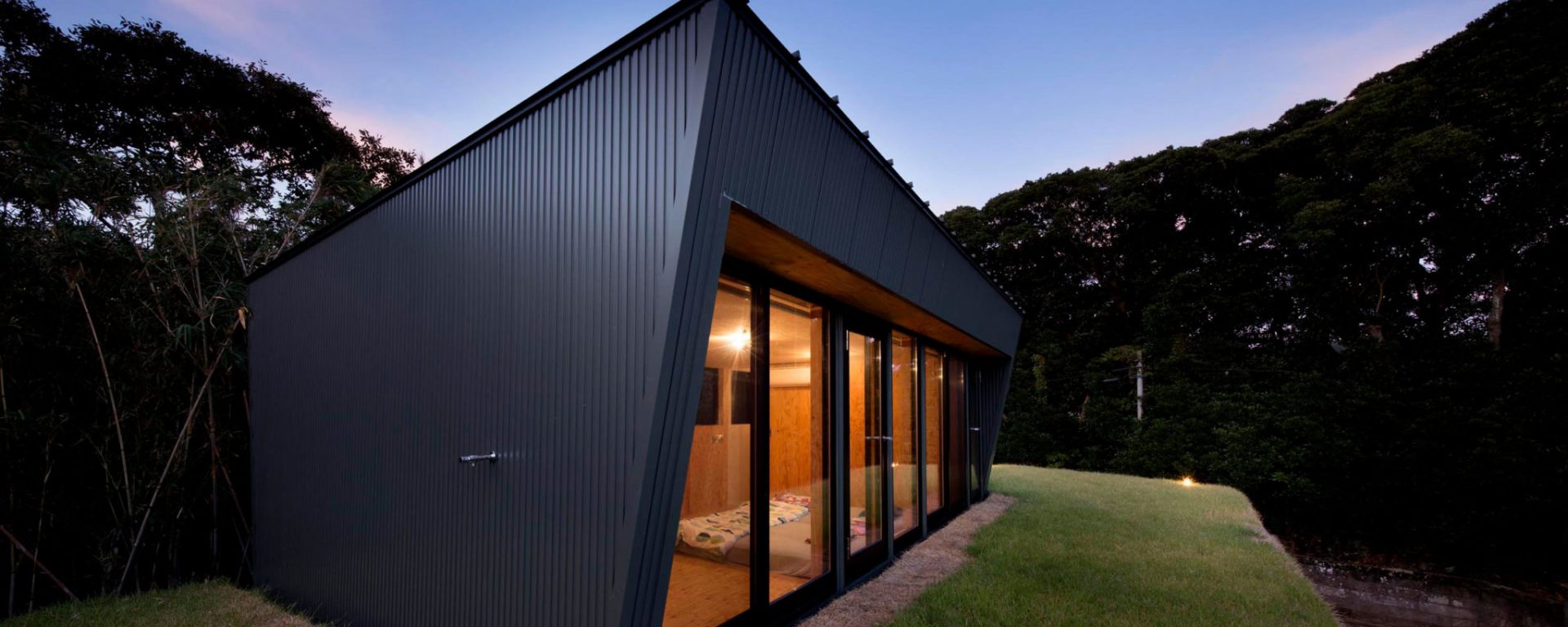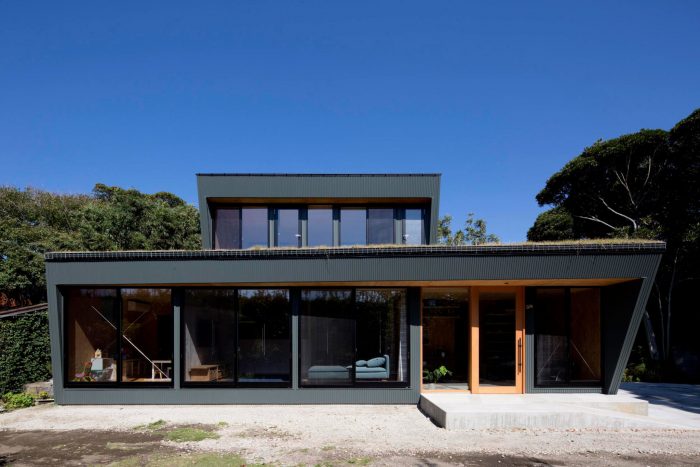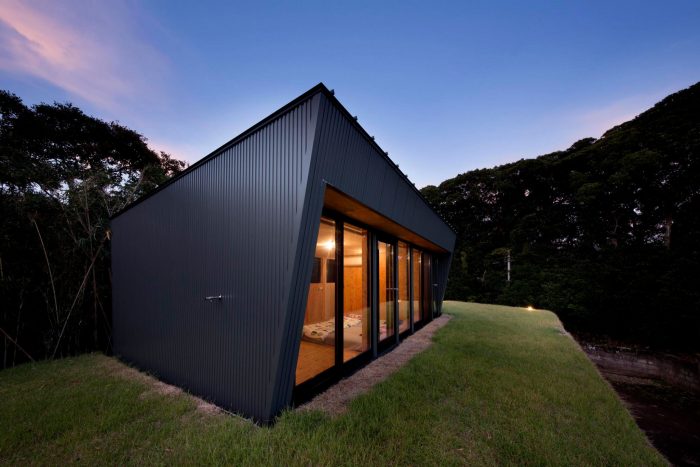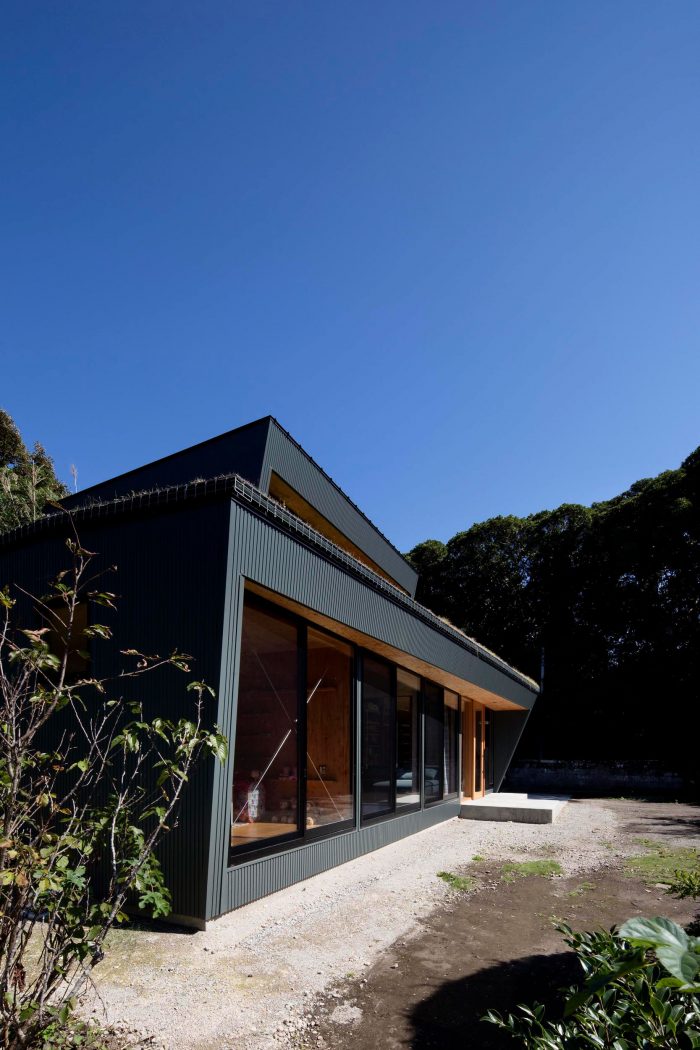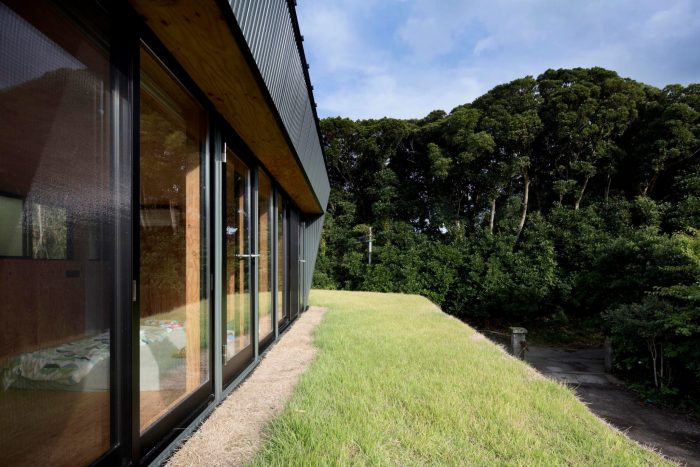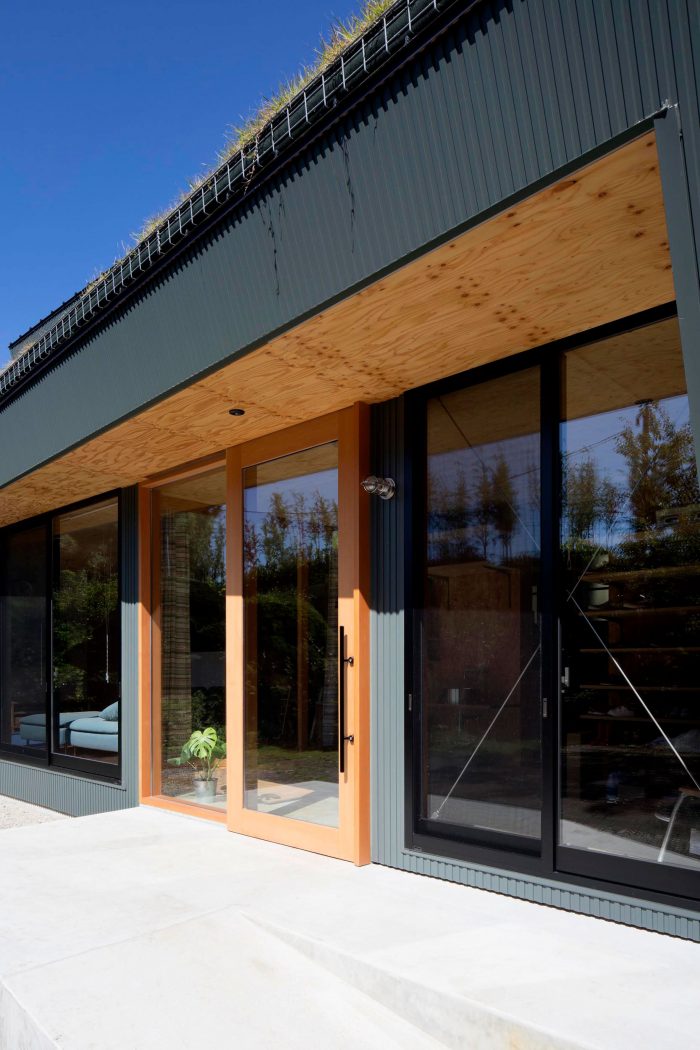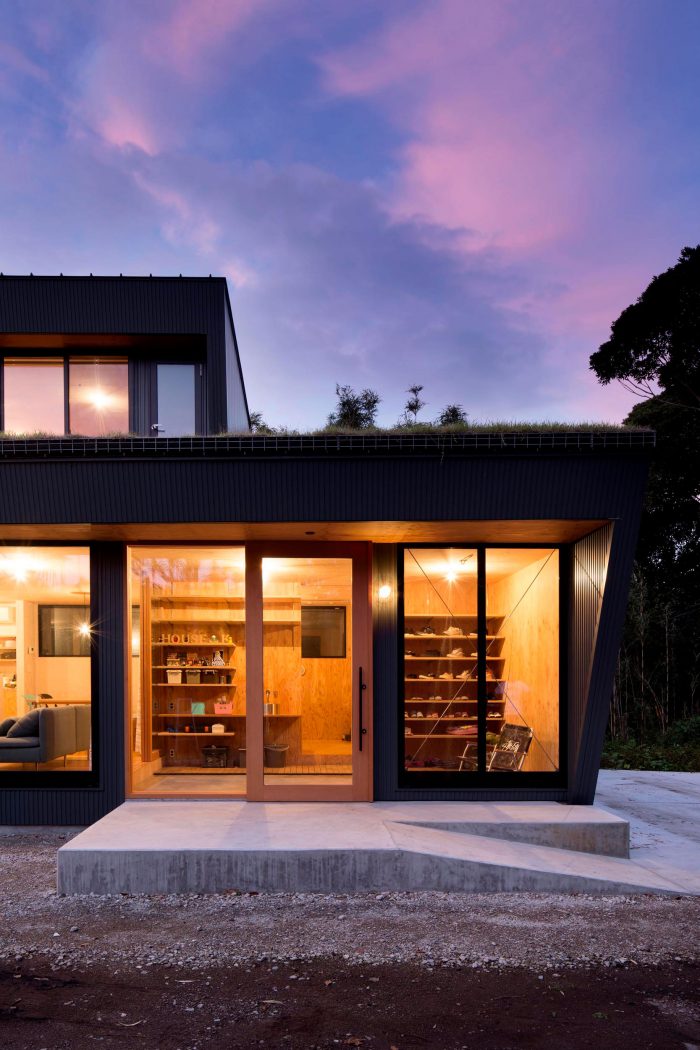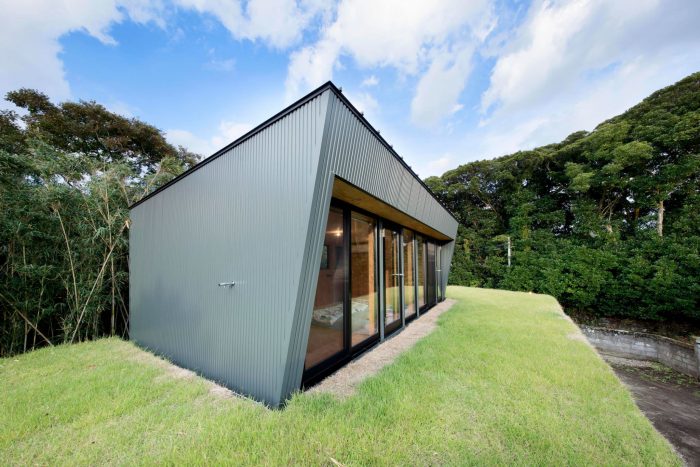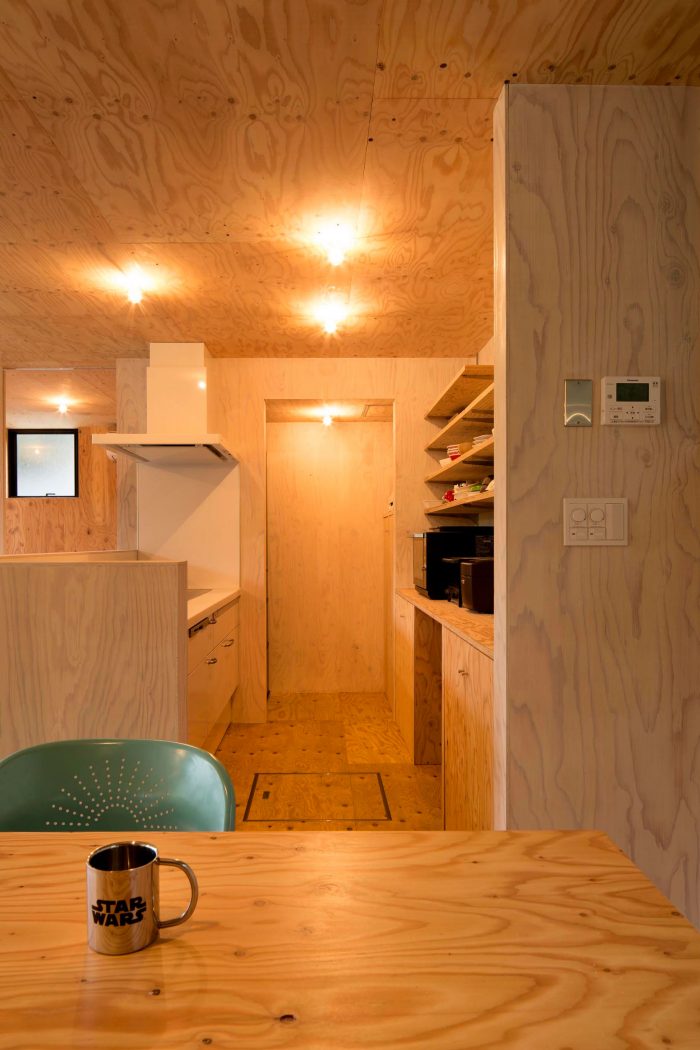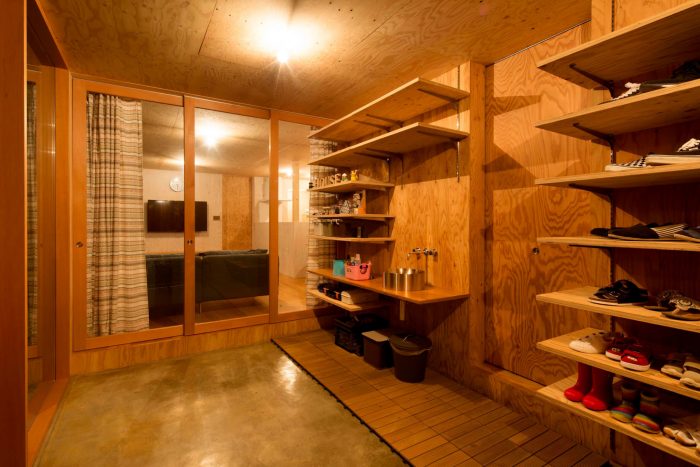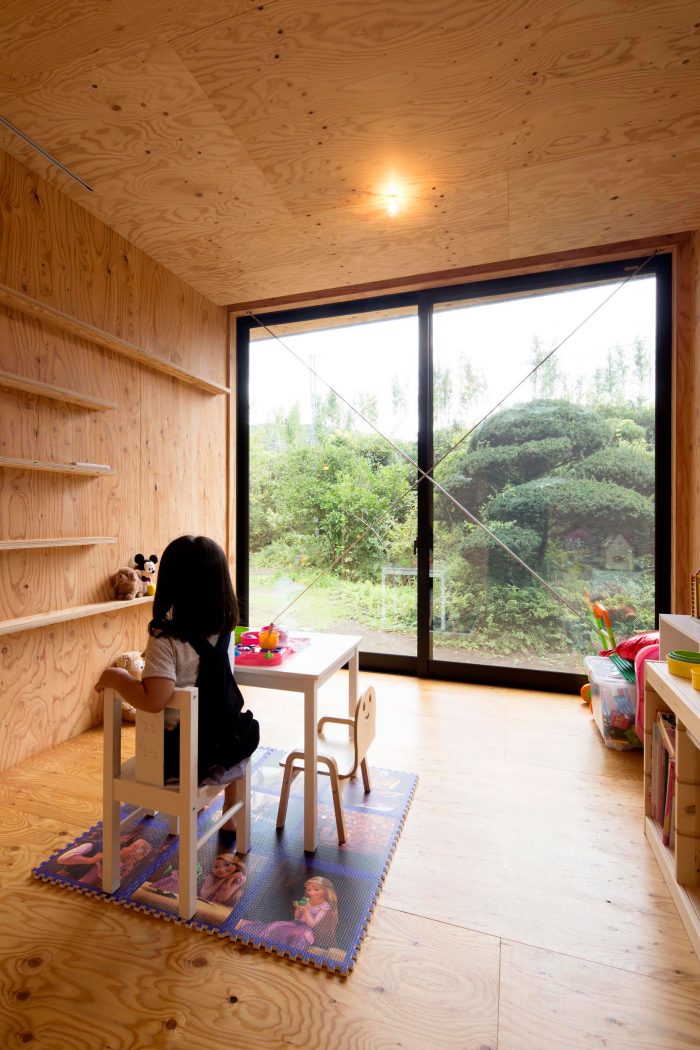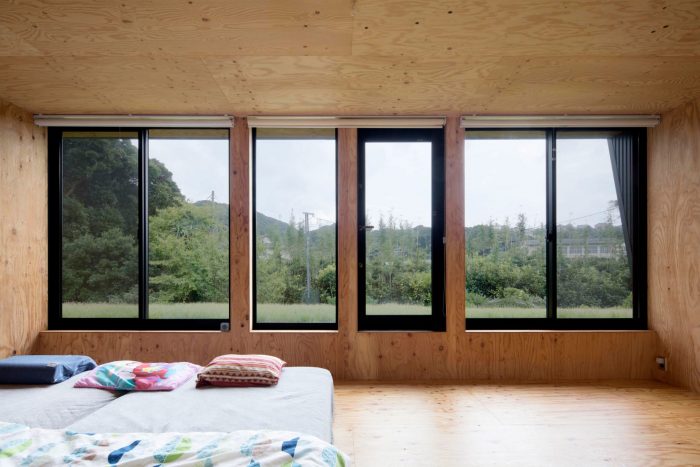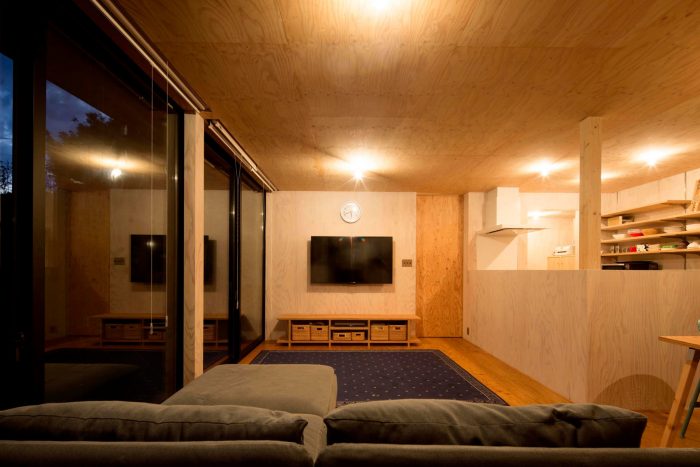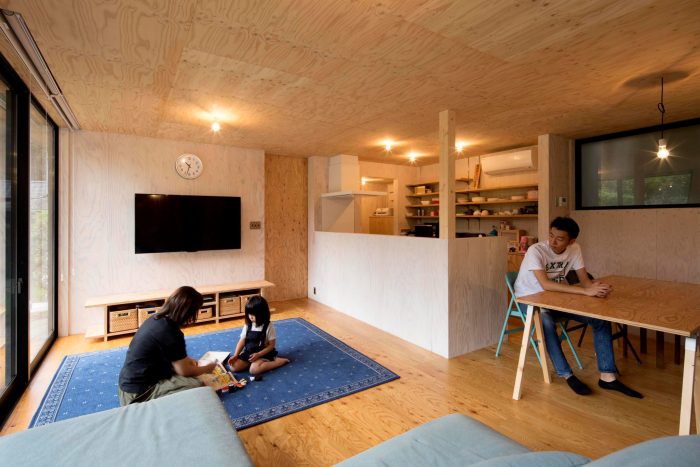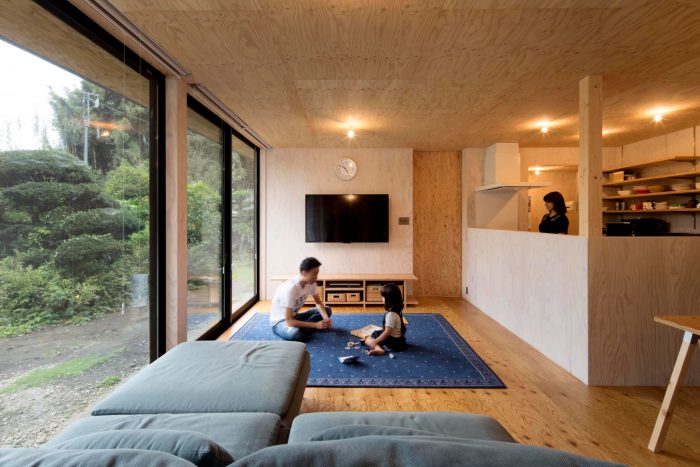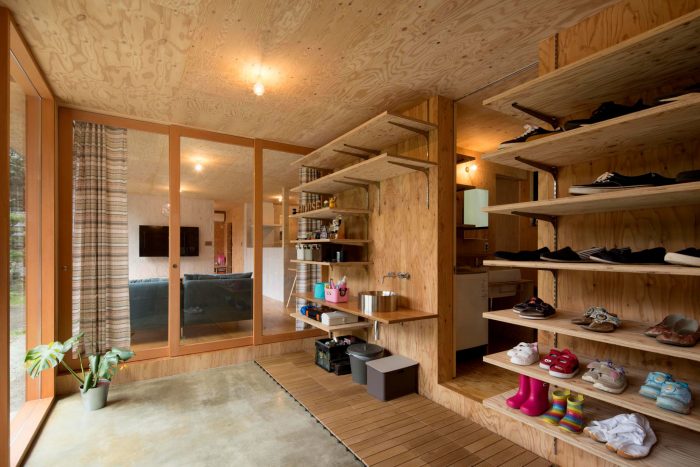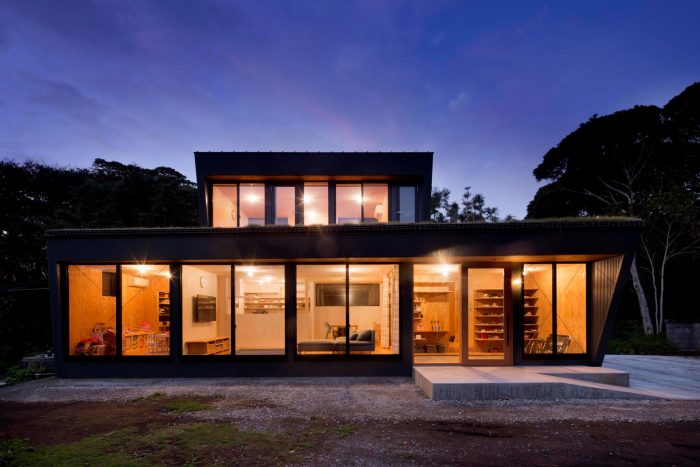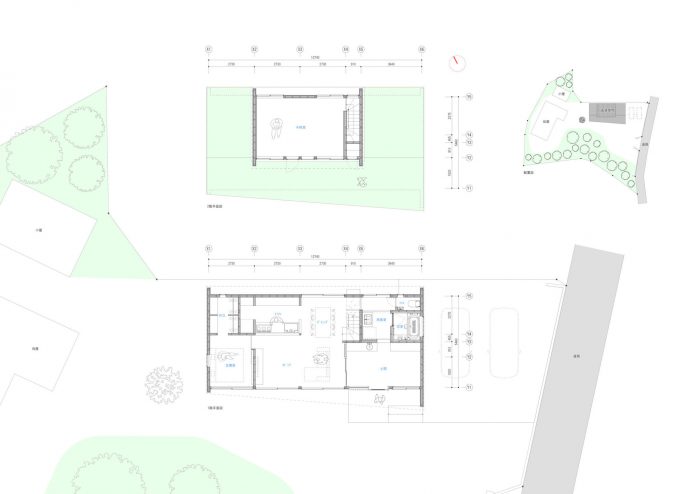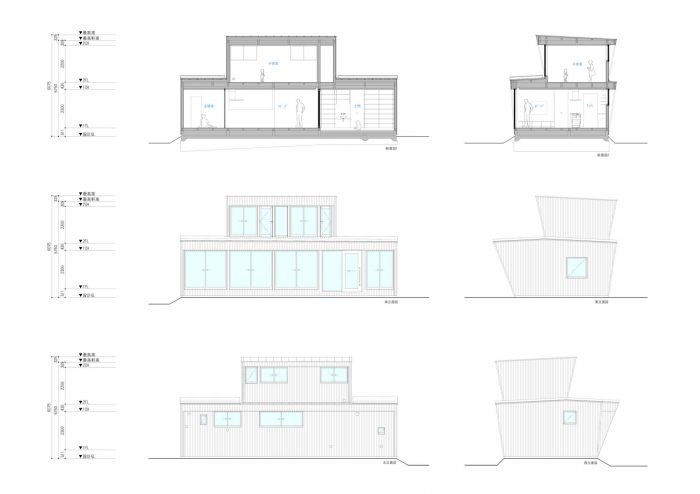该场地位于历史悠久的绿色住宅区。该区域非常大,约1200平方米,并且主体建筑,小屋和许多树木仍然存在。此外,相邻土地上没有建筑物,并且现场仍然有许多树木。当我第一次看到这个似乎被绿色植物包围的地点时,我感到了向各个方向发展的“潜力”。将来为儿童家庭建造房屋。根据需要建造一个小屋。您可能需要建造一个天文台,一个大甲板或一个运动场。一个小村庄可以通过长时间的修改来完成。我想到了这样一个概念。我认为我们应该扩大该网站的可能性,并考虑要成为新基地的房屋。
为了尽可能地开放该站点并建立连接,它是半一层的类型,并且第一层和第二层在整个南侧都有开口。在2楼,从1楼开始设置一个类似座舱的房间,并且1楼的屋顶覆盖着草皮。它被设置为一个阶段,不仅可以从第一层进入建筑物,还可以从第二层进入建筑物。例如,有可能通过在现场建造新建筑物并将其与桥梁连接或通过提供外部楼梯来增加进场数量。由于即使去除整个南表面上的开口也没有结构问题,因此可以建造一个新的小屋并将其直接连接。以这所房子为主体,它的结构使其可以通过连接子棚架进行扩展。
The site is located in a historic, green residential area. The area was very large, about 1200 m2, and the main building, hut, and many trees still existed on the premises. In addition, there was no building on the adjacent land, and many trees still existed as on the site. When I first saw this site, which looked like it was surrounded by greenery, I felt the “potential” of developing in various directions. Build a home for a child household in the future. Build a hut as needed. You might want to build a observatory tower, a big deck, or an athletic. A small village is completed by modifying it over a long span. Such a concept came to me. I thought that we should expand the possibilities of this site and think of a house that would become a new base.
In order to open as much as possible to the site and to have a connection, it was a semi-one-story type, and the entire south side of both the first and second floors was an opening. On the 2nd floor, a cockpit-like room is set up from the 1st floor, and the 1st floor roof is covered with a grass roof. It was set up as a stage to enable approaching the building not only from the first floor but also from the second floor. For example, it may be possible to increase the approach by building a new building on the site and connecting it with a bridge or by providing an external staircase. Since there is no structural problem even if the opening on the entire south surface is removed, it is possible to build a new hut and connect it directly. With this house as the main, it was constructed so that it could be expanded by connecting sub-huts.
内部可能性是连续的。我试图通过不提供尽可能多的分区来限制内部空间的使用。入口的土壤和二楼的儿童房是大型工作室,将来可以分隔。未来的孩子人数不确定,因此有必要考虑父母一起生活的可能性。而不是在设计阶段预测可能性并做出决定,而是在居住时确定不确定的部分,并且空间组成要能够完成。因此,我敢于用落叶松胶合板完成它。通过选择容易获得且价格便宜的材料,我认为擅长DIY的客户可以在以后进行自定义。
设计不限于初始阶段的所有可能性,完成时间也不是100%。整个站点的大约50%可能是当前的完美程度。多年来,剩下的50%是几代人继承的,目的是设计一个可以完成的基础。
The possibility is continuous inside. I tried not to limit the usage of the interior space by not providing partitions as much as possible. The entrance soil and the children’s room on the second floor will be a large studio, and partitions can be provided in the future. The number of children in the future is uncertain, and it was necessary to consider the possibility of parents living together. Rather than predicting the possibility and deciding at the design stage, the uncertain part is decided while living, and the space composition is such that it can be completed. For that reason, I dared to finish it with larch plywood. By selecting materials that are easily available and inexpensive, I thought that the client, who is good at DIY, would be able to customize later.
The design is not limited to all possibilities at the initial stage, and the time of completion is not 100%. About 50% of the entire site may be the current degree of perfection. Over the years, the remaining 50% was inherited across generations, aiming to design a base that would be completed.
Completion: June 2017
Location: Tateyama City, Chiba Prefecture
Use: Private housing
Structure: Two-story wooden structure
Site area: Total site area / approx. 1200 m2, divided site area / 240.25 m2
Total floor area: 92.74㎡
Design supervision: N.A.O. Naoki Kato
Construction: Kato Construction Co., Ltd.
Photo: Shinichi Hanaoka

